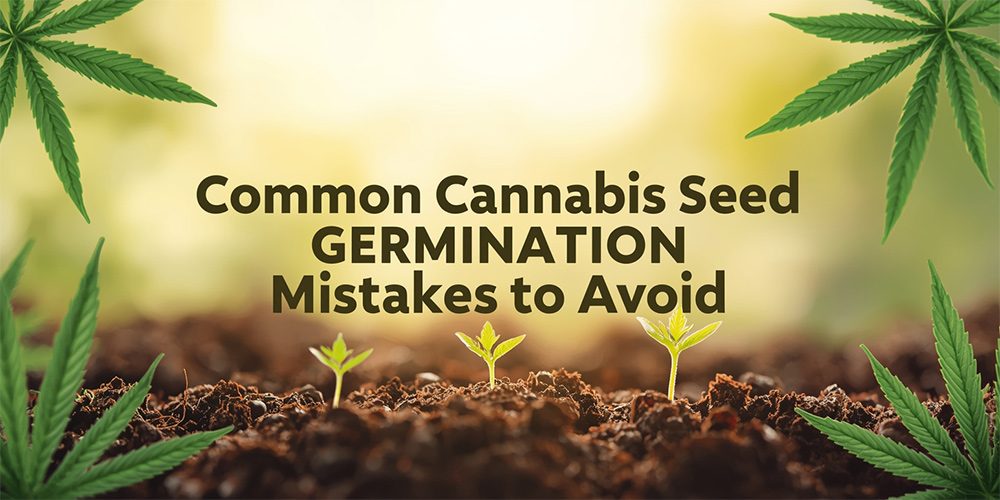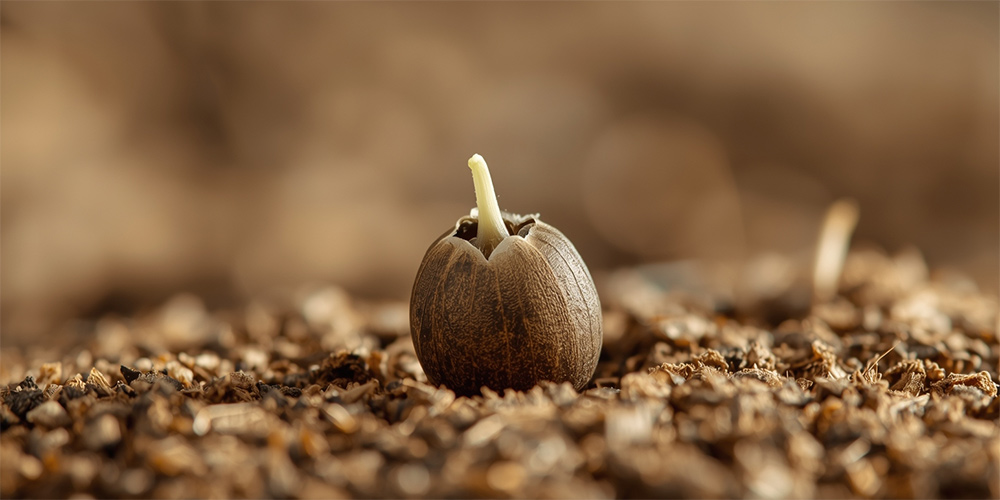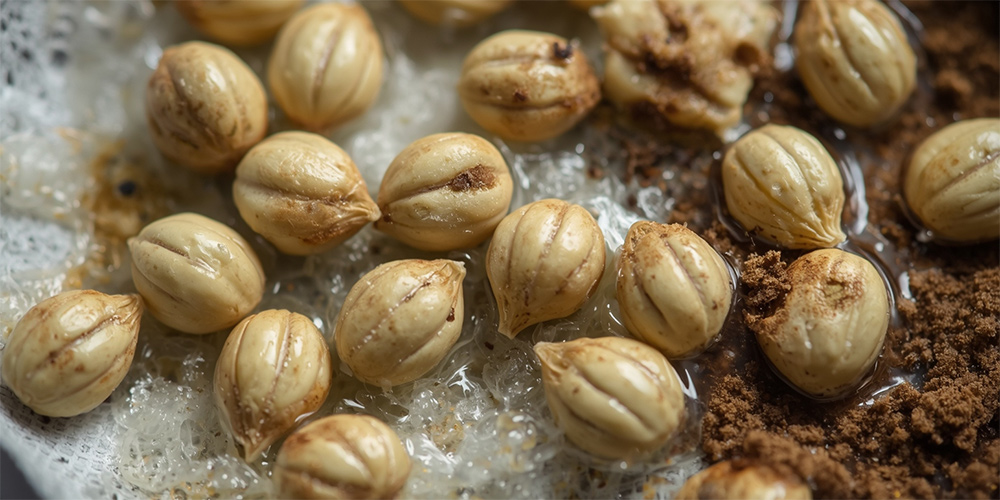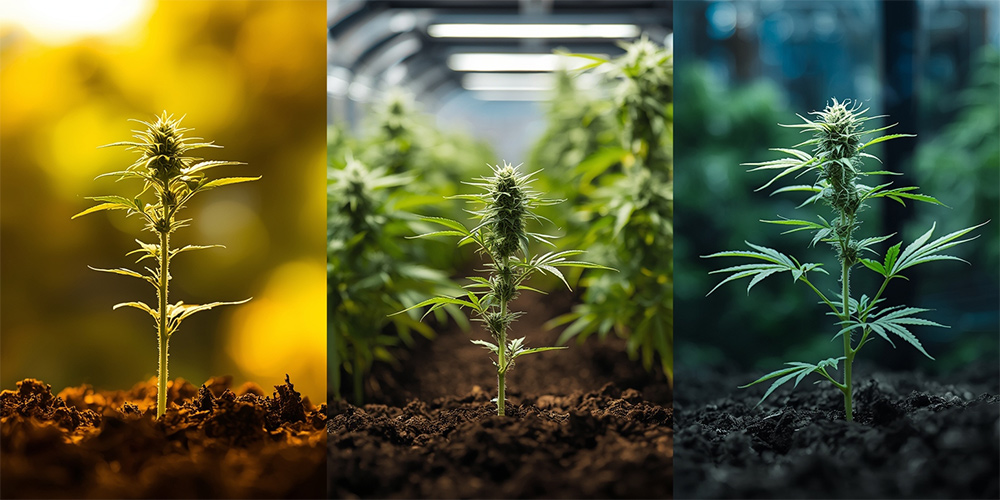
Home » Common Cannabis Seed Germination Mistakes to Avoid
Common Cannabis Seed Germination Mistakes to Avoid
Every grower knows the heartbreak — you’ve got your seeds lined up, ready to pop, and nothing happens. Days go by, and your precious seeds just sit there, stubbornly asleep. If that sounds familiar, you’re not alone.
Even experienced growers in Australia lose seeds to simple germination mistakes. The truth? Germinating cannabis seeds is easy to overcomplicate. Too much water, too little air, or even the wrong kind of tap water can ruin your chances before the seed ever cracks.
This guide breaks down the eight most common cannabis seed germination mistakes. It explains exactly how to avoid them — with bonus tips specifically for Australian growers who face unique local challenges such as heat, humidity, and hard water.
Quick Reference: Top Germination Mistakes
| Mistake | Common Symptom | Quick Fix |
| Overwatering | Seeds rot or never crack | Keep medium damp, not soaked |
| Temperature extremes | Seeds fail to activate | Maintain 21–27°C |
| Old / poor-quality seeds | Seeds stay hard for days | Use fresh, mature seeds |
| Handling sprouts with bare hands | Seedling wilts | Use sterile tweezers |
| Using chlorinated water | Seeds stall or mold | Use filtered or rested water |
| Wait until the root is 2–3 cm | Seed never surfaces | 1–2 cm depth max |
| Lack of oxygen / compact soil | Slow or no sprouting | Use airy, well-drained medium |
| Transplanting too soon | Seedling stops growing | Use an airy, well-drained medium |

The Science Behind Germination
When you soak a cannabis seed or wrap it in a paper towel, you’re kicking off a biochemical chain reaction called imbibition. The seed absorbs water, enzymes activate, and respiration begins — that’s when the embryo starts to wake up.
A 2023 study from the University of Guelph found that moisture between 60–80% of field capacity triggers the best metabolic activation for cannabis seeds. Too dry, and nothing happens. Too wet, and the seed can’t breathe.
Keep oxygen, warmth, and moisture in balance — and you’ll see that tiny taproot emerge within a few days.
If you’re new to growing, check out our guide on How to Germinate Cannabis Seeds: Step-by-Step for a simple, proven process that gets results.
1. Overwatering
This is the #1 mistake — and the easiest to make. Many growers think “more moisture = faster sprouting,” but too much water suffocates the seed and encourages mold.
Fix it: Keep the medium just damp to the touch. If you’re using the paper towel method, squeeze out any dripping water first. Open your germination container once a day to let in fresh air.
Australian tip: In humid regions like northern Queensland or the NT, even a slightly over-wet setup can cause fungal rot. Try using breathable containers or add a small ventilation hole to jars and domes.
If your seeds just won’t pop, read our guide on Why Aren’t My Cannabis Seeds Germinating? Common Problems to identify the issue and fix it fast.
2. Temperature Extremes
Cannabis seeds love warmth, but there’s a fine line between cozy and cooked. Ideal temperature: 21–27°C. Below 18°C, metabolism slows to a crawl; above 30°C, you risk killing the embryo.
A 2022 study from Wageningen University found that cannabis seed viability drops by up to 25% when temperatures rise beyond 30°C during early imbibition.
Fix it: Use a thermometer, not guesswork. A mild heat mat with a thermostat works wonders in cool southern climates. In hot areas, skip the heat mat and keep seeds shaded and indoors.

3. Poor Seed Quality or Old Seeds
Old or immature seeds are another silent germination killer. Good seeds are plump, brown, and often have a marbled pattern. Pale or soft seeds usually fail.
Fix it: Always buy from a trusted source and store your seeds correctly — in a cool, dark, dry place. Airtight containers with silica gel or rice work well in Australia’s humid coastal regions.
Tip: Avoid storing seeds in the fridge door — temperature swings can shorten lifespan.
4. Handling Sprouts with Bare Hands
Once a taproot appears, it’s incredibly delicate. Touching it directly can crush the root hairs or introduce bacteria.
Fix it: Use sterile tweezers or wear gloves when transferring seeds. Handle the seed shell, not the root itself.
Australian tip: In warm, humid conditions, microbes multiply faster — sanitize everything you use, even tweezers and containers, with a mild alcohol solution.
5. Water Chemistry Problems
This one surprises a lot of people. Australian tap water often contains chlorine or fluoride, and in places like Perth or Adelaide, it’s naturally hard water with high mineral content.
A 2021 study from the University of Sydney found chlorinated water reduced cannabis seed germination rates by 17%.
Fix it: Use filtered, bottled, or aged tap water — let it sit for 24 hours so chlorine evaporates. Aim for a pH around 6.0–6.5. If you’re on tank water, check pH occasionally, as it can drift acidic after rain.
6. Planting Too Deep or Compacting Soil
Seeds buried deeper than 2 cm often never reach the surface. Too compact soil also cuts off oxygen, slowing germination or causing failure.
Fix it: Plant 1–2 cm deep, and use a light, fluffy mix — coco coir, peat, or perlite blends are perfect. Avoid pressing down the soil too tightly.
Australian tip: If you’re growing in sandy soils (common in WA and SA), mix in coco fibre or organic compost to help retain moisture.
7. Premature Transplanting
It’s tempting to move sprouted seeds quickly — but transplanting too early shocks the young root.
Fix it: Wait until the taproot is about 2–3 cm long, or until you can see the first tiny leaves (cotyledons) breaking through. Transfer gently into pre-moistened medium.
Australian tip: Avoid transplanting during peak heat hours (10 am–3 pm). Early morning or evening is best.
8. Ignoring Airflow and Hygiene
Mold and damping-off disease thrive in stagnant air and unclean environments. A 2024 Australian National University study found that fungal contamination during germination increased by 40% in tropical humidity.
Fix it: Keep light airflow using a small fan or by cracking open containers daily. Always clean your hands and tools before handling. A sterile environment equals strong sprouts.
Hidden Germination Killers
Even if you’ve nailed the basics, a few sneaky mistakes can still ruin your run:
- Reusing dirty paper towels – bacteria multiply fast.
- Leaving seeds soaking too long – anything over 48 hours risks drowning.
- Adding too much hydrogen peroxide – high concentration burns embryos.
- Switching methods mid-process – once a seed starts, let it finish the way it began.
- Using overly bright lights – most seeds prefer darkness or dim light until they sprout.

Special Considerations for Australian Growers
| Climate Zone | Ideal Germination Months | Common Risk | Local Fix |
| Tropical (QLD, NT) | May–July | High humidity, mold | Germinate indoors, increase airflow |
| Subtropical (NSW North, SE QLD) | Aug–Sept | Sudden heat waves | Keep shaded and monitor temperature |
| Temperate (SA, VIC) | Sept–Oct | Cool nights | Use mild heat mat |
| Cool / Alpine (TAS, ACT) | Oct–Nov | Cold soil | Start indoors or in a greenhouse |
Legal & Ethical Disclaimer
Cannabis cultivation and seed germination are still restricted in many parts of Australia. While hemp and medical growing are licensed, personal cultivation is generally not legal without a permit. Always verify your local laws before germinating or cultivating cannabis seeds.
Conclusion
When it comes to cannabis seed germination, small details make all the difference. Get your moisture, temperature, and hygiene right — and you’ll rarely lose a seed again.
Quick Germination Checklist:
☑ Fresh, mature seeds
☑ Moist but not soaked medium
☑ Temperature 21–27°C
☑ Clean hands and tools
☑ Patience — 3–7 days to sprout
FAQ
1. Why won’t my cannabis seeds sprout? Usually too much water, bad temperature, or poor-quality seeds. Check for rot or dryness.
2. How long should germination take? Most seeds sprout within 3–7 days under stable conditions (21–27°C).
3. Should I soak seeds first? A 12–24 hour soak helps soften the shell — don’t exceed 48 hours.


3 Responses